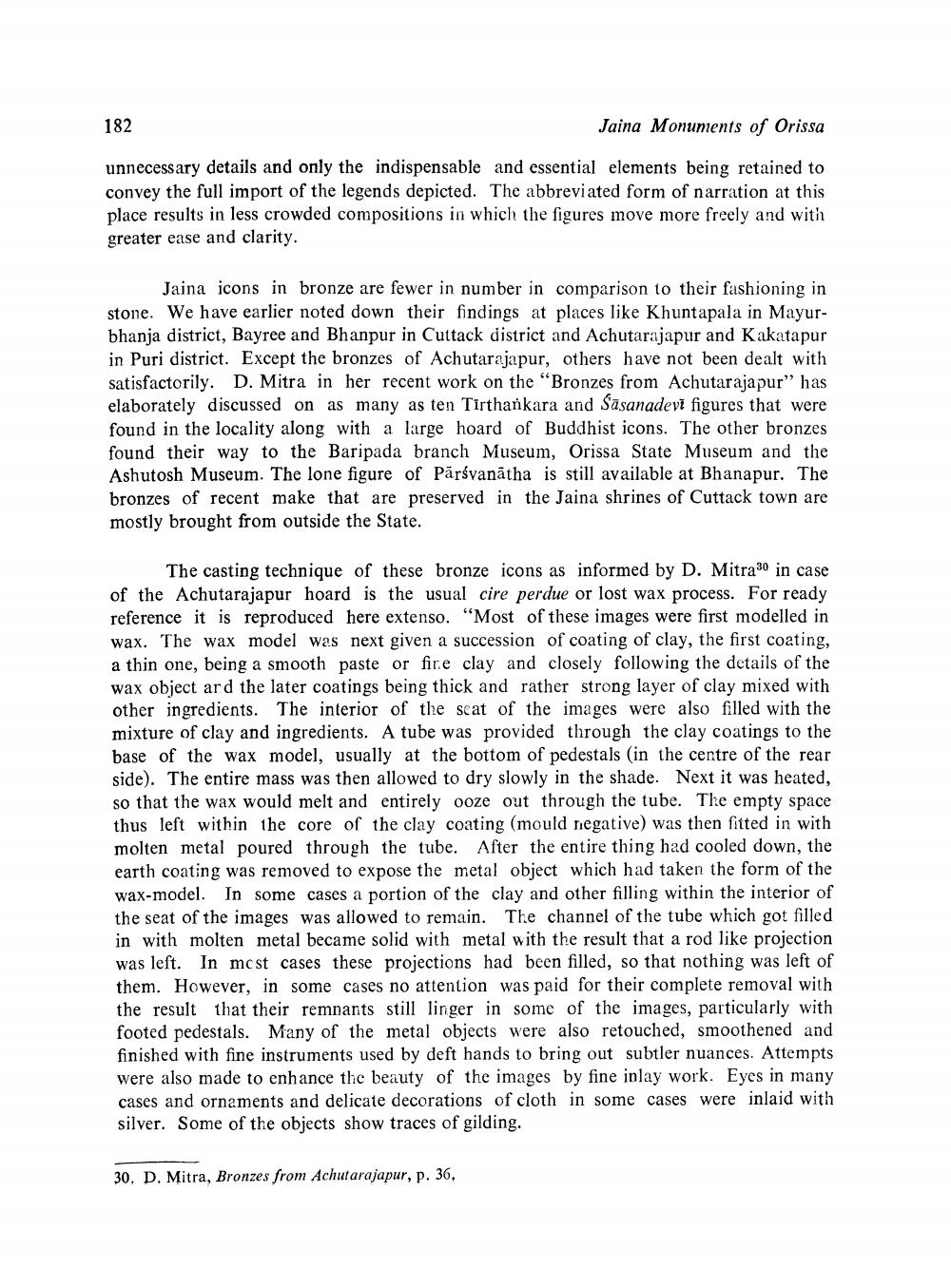________________
182
Jaina Monuments of Orissa
unnecessary details and only the indispensable and essential elements being retained to convey the full import of the legends depicted. The abbreviated form of narration at this place results in less crowded compositions in which the figures move more freely and with greater ease and clarity.
Jaina icons in bronze are fewer in number in comparison to their fashioning in stone. We have earlier noted down their findings at places like Khuntapala in Mayurbhanja district, Bayree and Bhanpur in Cuttack district and Achutarajapur and Kakatapur in Puri district. Except the bronzes of Achutarajapur, others have not been dealt with satisfactorily. D. Mitra in her recent work on the "Bronzes from Achutarajapur" has elaborately discussed on as many as ten Tirthankara and Sasanadevi figures that were found in the locality along with a large hoard of Buddhist icons. The other bronzes found their way to the Baripada branch Museum, Orissa State Museum and the Ashutosh Museum. The lone figure of Pārsvanātha is still available at Bhanapur. The bronzes of recent make that are preserved in the Jaina shrines of Cuttack town are mostly brought from outside the State.
The casting technique of these bronze icons as informed by D. Mitra30 in case of the Achutarajapur hoard is the usual cire perdue or lost wax process. For ready reference it is reproduced here extenso. "Most of these images were first modelled in wax. The wax model was next given a succession of coating of clay, the first coating, a thin one, being a smooth paste or fire clay and closely following the details of the wax object ard the later coatings being thick and rather strong layer of clay mixed with other ingredients. The interior of the seat of the images were also filled with the mixture of clay and ingredients. A tube was provided through the clay coatings to the base of the wax model, usually at the bottom of pedestals (in the centre of the rear side). The entire mass was then allowed to dry slowly in the shade. Next it was heated, so that the wax would melt and entirely ooze out through the tube. The empty space thus left within the core of the clay coating (mould negative) was then fitted in with molten metal poured through the tube. After the entire thing had cooled down, the earth coating was removed to expose the metal object which had taken the form of the wax-model. In some cases a portion of the clay and other filling within the interior of the seat of the images was allowed to remain. The channel of the tube which got filled in with molten metal became solid with metal with the result that a rod like projection was left. In most cases these projections had been filled, so that nothing was left of them. However, in some cases no attention was paid for their complete removal with the result that their remnants still linger in some of the images, particularly with footed pedestals. Many of the metal objects were also retouched, smoothened and finished with fine instruments used by deft hands to bring out subtler nuances. Attempts were also made to enhance the beauty of the images by fine iplay work. Eyes in many cases and ornaments and delicate decorations of cloth in some cases were inlaid with silver. Some of the objects show traces of gilding.
30. D. Mitra, Bronzes from Achutarajapur, p. 36,




